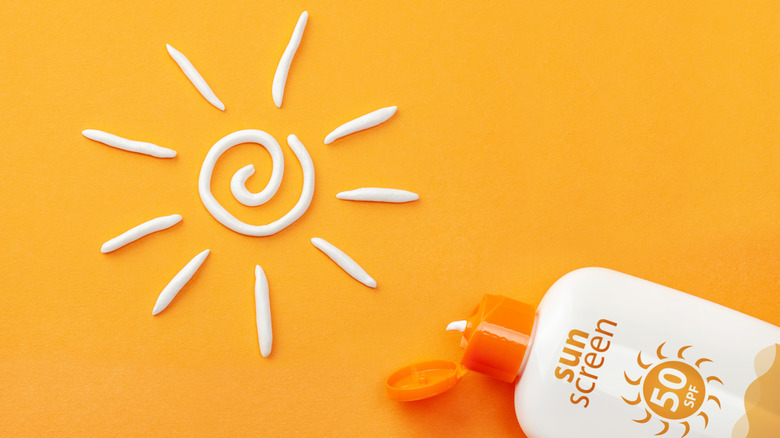Chemicals In Sunscreen That You Need To Watch For
According to the American Academy of Dermatology (AAD), skin cancer is the most common form of cancer in the United States. The organization recommends that all individuals wear sunscreen to minimize the harmful effects of the sun's ultraviolet rays. It is estimated that annually, nearly 10,000 people are diagnosed with some form of skin cancer. In an attempt to prevent sun damage and skin cancer, the AAD recommends a sunscreen with an SPF of 30 or higher, which is waterproof and broad spectrum, in addition to other safety measures such as avoiding direct sunlight during the height of the sun's strength, re-applying sunscreen frequently, and wearing protective clothing when possible.
While people have been slathering on sunscreen with little regard to what it consists of, in recent years the U.S. Food and Drug Administration (FDA) has been raising some red flags. The FDA has led the call for more research to be done and provided by the sunscreen industry, looking at the safety and efficacy of several ingredients found in common sunscreen products (via The Washington Post). Six active ingredients under scrutiny are avobenzone, homosalate, oxybenzone, octinoxate, octisalate, and octocrylene.
While the FDA is calling for more research to be done, Theresa Michele, director of the division of nonprescription drug products for the FDA, told The Washington Post, "This request for additional data does not mean that the FDA has concluded that these 12 ingredients are unsafe," instead they are seeking additional data to "validate the safety and effectiveness of all these ingredients."
What are the potential long term effects of active sunscreen ingredients
Experts have questioned some of the ingredients' safety and potential health effects of certain sunscreens, such as skin irritation, hormonal changes, and even skin cancer (via The Washington Post). Studies by the FDA demonstrated that chemicals in the protectant were absorbed by the skin and into the body at higher levels than previously thought. Past FDA studies also demonstrated that hormonal disruption could occur and lead to fertility issues and poorer outcomes for babies (via WebMD).
The FDA has asked sunscreen makers to conduct studies on their products and ingredients in order for them to be considered "GRASE" or "generally recognized as safe and effective." In the meantime, the AAD is actively trying to reassure people about the safety and importance of using sunscreen, stating "While the FDA is asking for more data, it does not say that the ingredients are unsafe. It does not ask the public to stop using sunscreens that contain any of these ingredients."
The FDA is still awaiting results from sunscreen manufacturers, despite setting a 2019 deadline. In the meantime, however, it is important to remember that the sun's harmful rays have long been known to cause extensive damage to the human body and skin. So read your labels carefully and try to protect yourself as best as possible.


